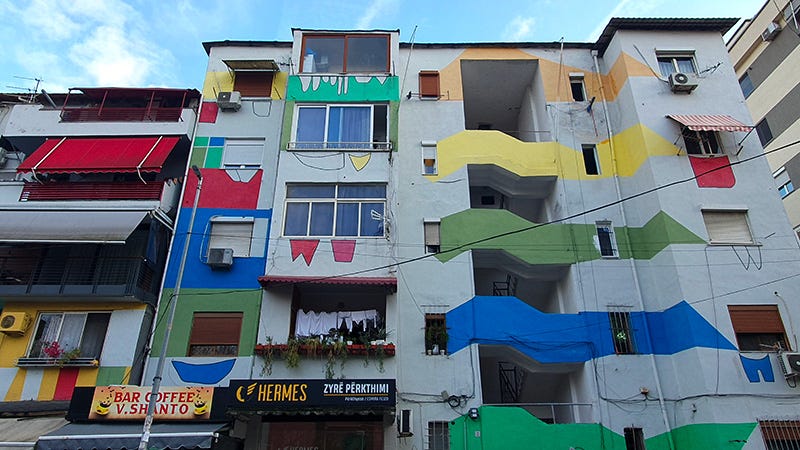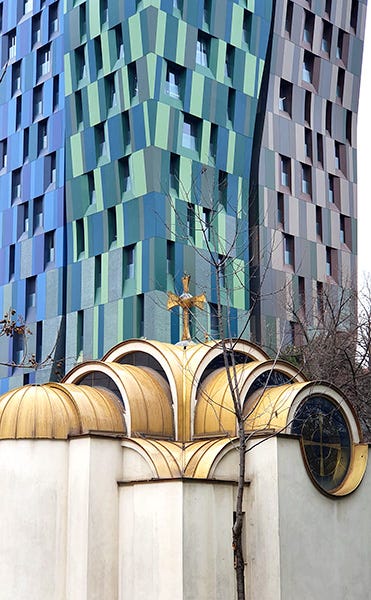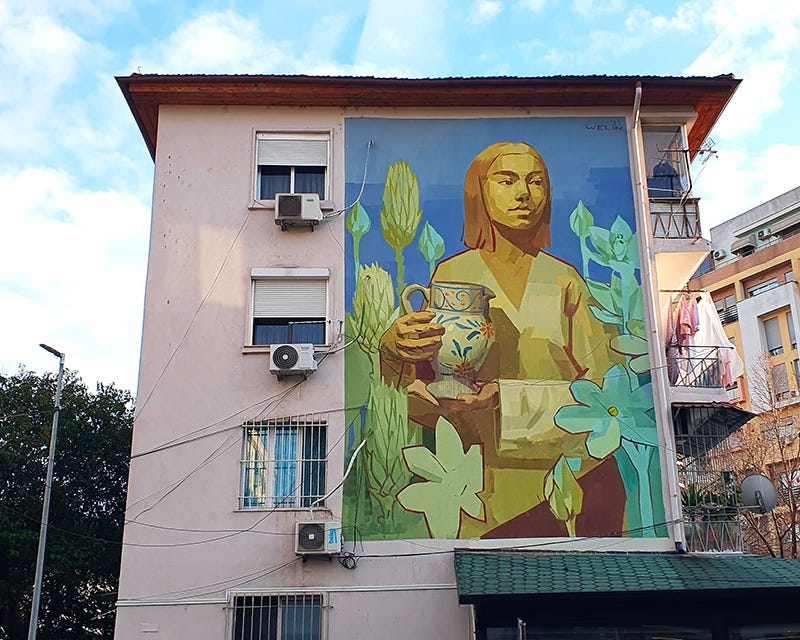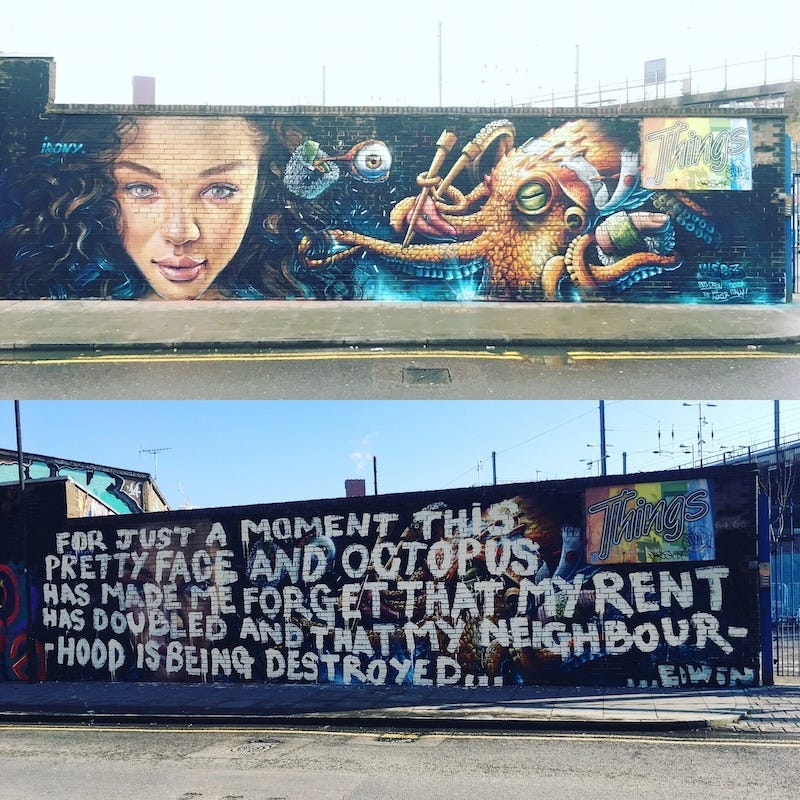👋 Ciao, I'm Giulia Blocal, your street art insider. Welcome to a ✨ special edition ✨ of Beyond the Walls, a monthly deep dive into street art, graffiti, off-the-beaten-path travel, and a bit of my life in between.
This is my first-ever paywalled newsletter in 12 years. I decided to write it as a way to give back to those who have been financially supporting this project—some for a long time—without ever asking for anything in return. While the 1st of the month newsletter will always remain free for everyone, from now on, there will occasionally be a paywalled edition, a small thank-you to the subscribers who help keep this newsletter alive and accessible to all.
For this special edition, we’re tackling a crucial topic: how street art, once a countercultural force, has paradoxically become a tool for gentrification—a reflection sparked by my recent trip to Tirana, Albania, a city undergoing rapid transformation.
But first, a few updates on my life and the BLocal project—these are free for all readers.
Let’s dive in!
Ciao,
How are you? Last time I wrote, I was in Tirana, Albania, but I was so caught up in my first Balkan weekend in ages that I postponed a proper writing session—so here we are. 😊
Some of you were surprised to learn about my past connection to the Balkans, which makes sense—many of you probably joined this newsletter after downloading one of my street art Google Maps and might not know that, before shifting my focus to graffiti and street art, BLocal was a different kind of travel blog. To give you a glimpse of that era, here’s one of my all-time favorite posts: My Best Friend’s Big, Fat, Balkan Wedding. It captures a lot about that chapter of my life.
Now, back to Tirana. The city has changed beyond recognition since I used to visit regularly 10 to 15 years ago. Walking through its streets now feels like stepping into a giant construction site. Cranes loom over entire blocks, their skeletal arms tracing new shapes in the sky, while scaffolding wraps around old façades like bandages on a city undergoing radical surgery. Dust rises from the ground as jackhammers pound away, making room for luxury developments.
Tirana’s transformation is ambitious, and on the surface, it tells a story of modernization, economic growth, and international prestige. Starchitects are competing to reshape the skyline, designing high-rises with rooftop infinity pools that promise a future as sleek as their glass exteriors. But beneath this glossy surface lies a different reality—one of displacement, rising costs, and the erasure of the city's past.
Back in 2014, I wrote an article about Tirana’s painted buildings, a project spearheaded by former mayor—now prime minister—Edi Rama, who once described his role as mayor as “the supreme form of conceptual art.”
His vision brought bursts of color to the imposing socialist-era buildings that once defined Albania’s capital—though, with the city now a playground for starchitects, who knows how long they’ll still be around. More than just an aesthetic intervention, these bold facades symbolized a break from Albania’s grey past and a promise of a brighter future.

Today, murals are still multiplying across Tirana, but their role has changed. They’ve become part of a curated city image—aesthetic embellishments that make rapid urban change more palatable.
The street art festival format has brought polished, large-scale works that blend with the luxury towers, reflecting a broader connection between street art and gentrification—a topic I’ll delve into further in the second part of this newsletter.
This shift is even more evident when considering who is shaping Tirana’s new artistic landscape. Instead of supporting local grassroots initiatives, the city’s administration has entrusted an Italian art gallery with overseeing a mural program.
I’ll dive deeper into this case in a dedicated blog article—also because I want to share all the photos of the artworks, some of which are undeniably striking, but just as problematic.
I hope to publish this article later this month, just in time for our usual first-of-the-month appointment.
See you then,
Giulia
✈️ Travel with me!
🇫🇷 Paris: April 25 - 29 🥳 (The book party on April 25th is open to all! Come say hi!)
🇵🇹 Lisbon: May 8 – 12
Street Art and Gentrification: The Paradox of Urban Creativity
Street art has paradoxically become both a symbol of resistance and a tool of urban transformation within the highly contested process of gentrification—a process that displaces working-class communities and commercializes cultural expressions.
Initially an underground and rebellious practice, street art is now widely embraced by city planners, real estate developers, and tourism boards as a tool for marketing and urban branding.








